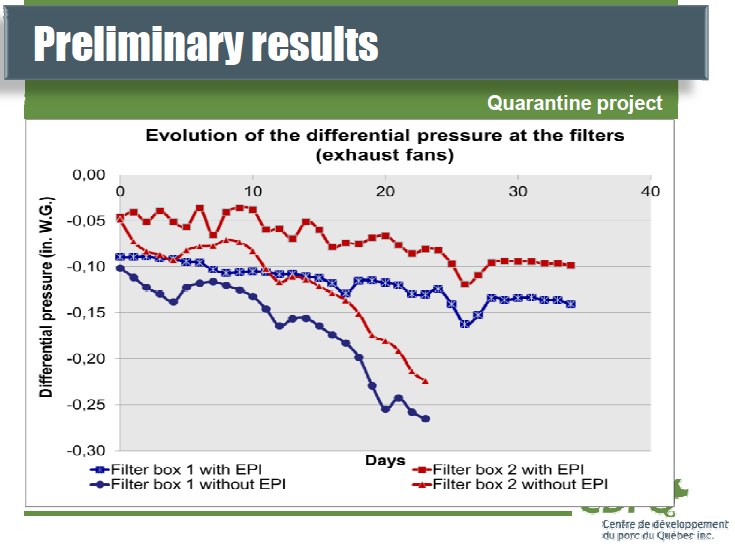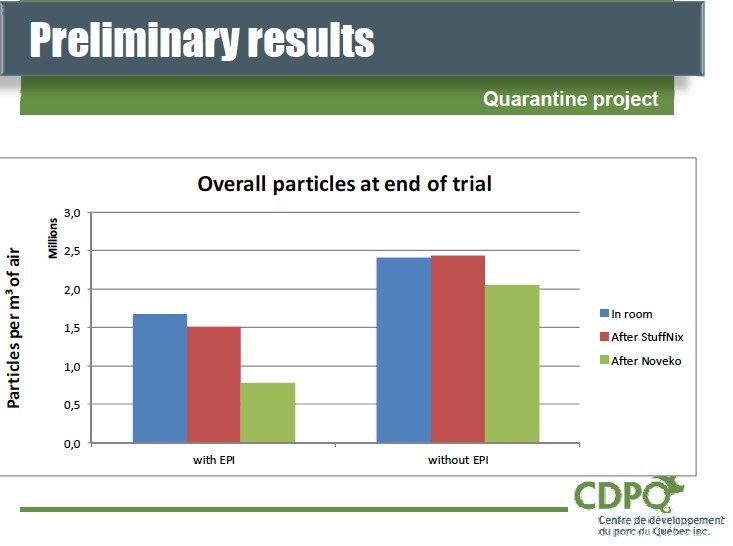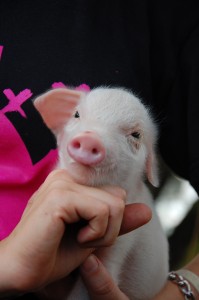By Dick Hagen, Hagen and Associates
Being honored as a National Environmental Winner in pork production is indeed a big deal. Only four such honorees nationwide each year. And in the 18 years since the program was initiated by the National Pork Producers Council, Minnesota has claimed 12 winners.
But winning awards is the least concern of Wayne and Laura Dahl, LacQuiParle County, MN pork producers and 2012 honorees in this illustrious event. More important, much more important is presenting their 240-acre farm, hog production facilities, and neatly landscaped and artistically decorated farmstead as an entity of rural pride.
“Stewardship is a commitment that comes along with farming,” commented Wayne adding, “The public holds us accountable to be good stewards, especially in this day and age of anti-livestock activists, hidden cameras, etc. We don’t want to be just another name on that abstract. For us it is a blessing and privilege to have a farm like this. We want to leave a legacy.”
The background of Wayne and Laura dates back to 1976 when Wayne bought the farm. “I fell in love with this farm the minute I drove up the driveway 36 years ago when we were married,” says Laura referring to the country charm of the old farmstead nestled amongst a shelterbelt of aged cottonwoods and other assorted trees.
Wayne raised hogs in his Dad’s older hog sheds initially but 1979 marked the building of their first farrowing/nursery facility and a finishing setup. “I helped my Dad with his hog operation which at that time was on dirt. Even my first farrowing of our own sow herd was at my Dad’s place but now everything is produced on slats. And it has been a major transformation,” he reflected.
“You may think that pigs on dirt have all that freedom and life is good. But the actuality is that it’s much harder to control flies, rodents, mud and just the weather in general. So as we could afford it we gradually moved more of our total hog operation inside on slats. We started on partial slats in our 1979 finishing house and could see immediate benefits.
“When 2003 rolled along and we got into our major expansion, we decided to go all slats. We’ve been pleased with the comfort of the pigs, the cleanliness of the pigs, the ability to take care of individual pigs as needed and of course the much greater efficiency and ease of our daily chores also,” said Wayne.
Their expanded operation now includes a 4,400-head nursery and four 1,100-head finishing barns. Pigs are grown on contract for Mill Farm, a 5,000-sow operation owned by Greg and Paul Boerboom, Marshall, MN. The Dahls receive six groups (about 4,400 pigs per group) of 21-day-old ‘freshly weaned’ nursery pigs a year from Mill Farm. Care taker of the nursery pigs is very much the responsibility of Laura. She is well qualified.
She has a medical lab technician and also worked as a hospital physical therapy aide so getting these ‘baby’ pigs off to a good start is her special challenge. “I love it,” she said. “These little rascals are always fun to watch. I carefully note their weights. Every batch has a few tail-enders so I sort them into their own pen and even provide a special mat, about 4’ x 6’, that I place over the slats close by their tube feeders. Three times a day I put some of the same starter ration on this mat so if they’re not yet ready to nibble at the tube feeders they can feed off this mat.”
She sorts and groups by size and makes certain they find the nipple waterers. Pigs in that ‘hospital pen’ get even closer attention. “I look at every pig, from snout to tail, every day. Treat your pigs well and they treat us well,” noted Laura. At 40 to 60 lbs, pigs move to finishing barns. Marketing is at about 280 lbs.
Technology gets noted
Anez Consulting Inc., Willmar, MN assists with nutrient management, crop scouting and the implementation of conservation practices on the farm. Manure from the 8’ deep pits is tested with application rates calibrated to meet the fertilizer needs for the next year’s crop. A 10,000-gal. tanker equipped with a flow meter applies the manure with GPS precision in soybean stubble.
The Dahls use a manure additive to help stabilize the nitrogen in the fall-applied manure. Also the feed additive, phytase, is used to reduce the amount of phosphorous in the manure. This enables them to boost manure application rates by up to 20% without building phosphorous in the soil.
Nothing gets ignored in a modern swine operation. Pig comfort is first and foremost in their operation. And that includes the adaption of a few ‘technological wrinkles’ still unfolding in much of the swine industry. But Wayne doesn’t mind being at the front end of new technologies. “He’s a technology nerd,” chuckled Laura. Wayne agreed, “Yes, we’ve come a long way in pork production and we’re always looking for new ideas that might help us to do a better job.”
Indeed. Like he was one of the first in the nation to install EPI technology. Designed by Baumgartner Environics, Olivia, MN the EPI (electrostatic particulate ionization) Air System discharges literally millions of negatively charged ions into the air space every second. These negative ions attract dust particles polarizing them to act like magnets and fastening to whatever surface they touch first.
“Yes, we are seeing lower dust levels and that’s appreciated by the pigs and the workers in the buildings. It also means fewer odor-carrying dust particles in the ventilation system,” noted Wayne. That lack of ‘hog barn’ odor is very noticeable to visitors.
Water conservation too
Water meters are also part of technology at their farm. “Being aware of water quality is a starting point in conservation farming, even as it pertains to your livestock. With these meters we are constantly monitoring our water. So if we notice any slowdown in pig performance we check the meters to see if there has been a drop off in water consumption. If that happens that’s a good indication of needing to take a closer look at the animals,” said Wayne.
A new tool for better water consumption is what’s called a fresh water trough. Yes, nipples are the traditional water source for most swine operations including the Dahls but they’ve added something new in their nursery. “What we have here is a water pan at floor level with water level controlled by a bladder that maintains constant water level. When you get 12 to 13-lb, 3-week old pigs newly weaned from their mothers, the first thing they want is a drink of water. But these metal nipple waters are totally new to them however they can see water in these pans and very quickly are drinking from them. Plus we’re told these pans reduce water wastage 20 to 30%. We’ve really seen an improvement.”
They’ve also switched from using chloride in their watering system to hydrogen peroxide. Using a product called Oxy Blast for treating nursery water, Wayne indicated it also reduces manure pit odors because the oxygenated water that drips from the nipple waterers produces an anaerobic environment in the pit below the slatted floors.
Also new is a simple in-line structured water filter device only about 12-inches long and as Wayne describes, “It’s just glass marbles that water passes through and the claim is that this process energizes the water which in turn means better water utilization within the pigs system.”
Cautious about claiming ‘scientific results’, Wayne simply stated. “Between the Oxy Blast system and this structured water we’re seeing our young pigs get off to a much better start.” He pointed out however there are so many variables in each group of pigs that it’s difficult to pin-point the success.
Their system revolves around 9 weeks for isoweans in the nursery facility and 18 weeks in the finishing barns. After each 9-week nursery timeframe, the entire structure gets a pressure washed, hot-water cleaning “….so it pretty much looks and smells like the inside of a car wash.” The same process happens after each cleanout of the finishing barns.
A farm for all ages
Wayne says the sparkly clean appearance of their hog operation is now typical industry wide of America’s pork producers. But it’s not all high-tech that drives the Dahl’s’ environmental stewardship. Much goes to simple things like keeping their farmstead comfortably clean and tremendously fun for their own grandchildren, neighboring kids, even classes from the local schools for a look at Laura’s incredible ‘petting zoo’ which includes an incredible variety of unique birds, chickens, pheasants, goats, geese, rabbits and a pair of adorable llamas.
“I’ve always loved animals. I remember as a little girl being so sensitive about my little pets. It’s my nature. I was born with it apparently. My pets are good therapy for me, for my friends, and especially for little children. My grandmother used to love her chickens. I grew to cherish her love for chickens. I even decorate my kitchen with chicken art work,” says this lady with an inexhaustible heart of love and sharing. “Grandparents love to bring their little grandchildren to our house,” she noted.
Wayne and his brother David team up to grow 1,800 acres of crops in a corn-soybean rotation. The Dahl’s youngest son Jordan who is also a professional wood carver is an integral farming partner. Also a neighboring young farmer, Tanner Winge, is a part-time assistant on the swine enterprise. “He’s just an exceptional young guy. I can’t say enough about his animal husbandry skills,” said Wayne.
Their family includes Tanya, age 34; Tera, 31; Terese Viessman, 29, with husband Nate and children Skylar, Walker and Tucker; Jarrett, 27 and Jordan, 25. Both sons have become skilled chain saw sculpturing talents with Jarrett winning 1st place in the 2012 Alaska Chain Saw Carving show.
About the National Environmental Steward Award
The National Pork Checkoff, along with its cosponsor, National Hog Farmer magazine, selected four pork farms to be honored as the 2012 National Pork Environmental Stewards. This year’s award recipients are: Dahl Family Farm, Dawson, MN; Future View Farm, Willow Street, PA; Trail’s End Sow Farm, Ames, Ok; Reed Family Farms, Ottumwa, IA.
The Environmental Steward award winners were selected by a panel represented by other hog farmers and environmental organizations. The committee reviewed applications from pork producers who are committed to upholding the ideal relationship between pork production and the environment. The applicants’ farms were evaluated on their manure management systems, water and soil conservation practices, odor-control strategies, farm aesthetics and neighbor relations, wildlife habitat promotion, innovative ideas used to protect the environment and an essay on environmental stewardship.
Minnesota honorees over the years are the following: 2012, Wayne and Laura Dahl of Dawson; 2009,Brandon and Monica Schafer, Schafer Farms, Goodhue; 2008,Jim and JoAnn Veldkamp,Veldkamp Farms, Jasper; 2007,Mike Haupert of M & J Farms, Hadley; 2006, David, Brian and Bob Braun of Braun Farms, Le Sueur; 2005,Sandy and Ben Ludeman of Saratoga Pork, Tracy; 2004,Dan and Midge Boettger of Three Generation Pork, New Richland; 2003, Dr. Dick Nicolai and Sam Watkins of Nicolai Pork Producers, Inc., Hector; 2000,Scott and Shelley Schwartz of Schwartz Farms, Garvin; 1998, Peter and Paul Zimmerman, and Cliff Jes of Woodville Pork, Waseca; 1996, Don Lafferty of Tru-Joy Farms, New York Mills; 1995,Marlin and Wilda Pankratz of Mountain Lake.




